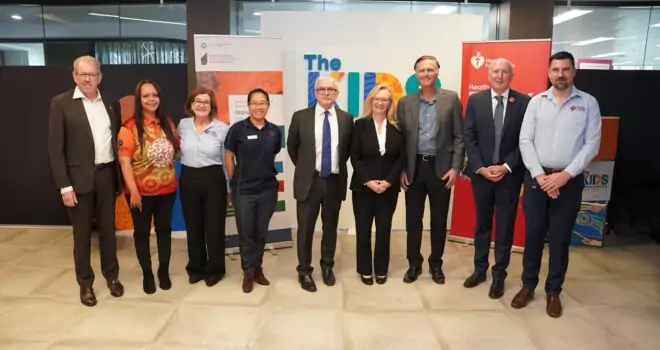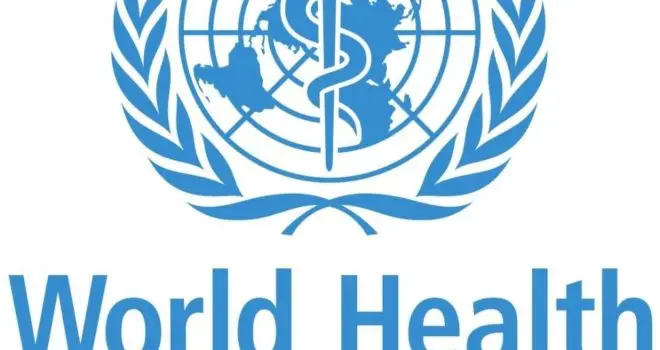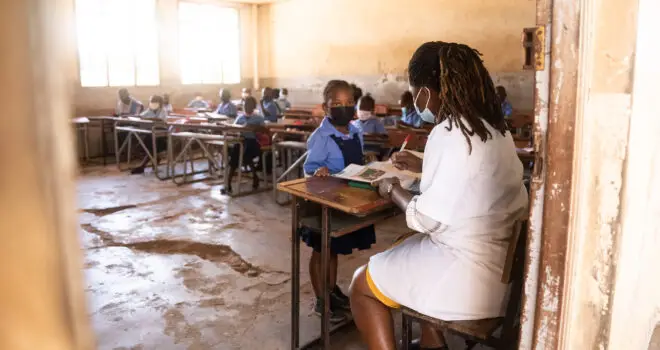Interview on “The Investment Case for the Prevention and Management of Rheumatic Heart Disease in the African Union 2021-2030: A Modelling Study” with co-author Gene Bukhman, cardiologist at Brigham and Women’s Hospital (BWH), Assistant Professor of Medicine and Assistant Professor of Global Health and Social Medicine at Harvard Medical School.
WHF: What was the impetus for this work among those involved?
GB: The authors come from the World Heart Federation, Harvard Medical School, Brigham and Women’s Hospital, University of Cape Town, and include colleagues from the African Centres for Disease Control and Prevention (CDC) as well as from the Public Health Foundation of India. Together, we focused on Rheumatic Heart Disease (RHD) in the countries of the African Union given that they have the highest global prevalence and incidence of RHD. It’s a crippling disease that kills tens of thousands of children and young adults in that region every year and is associated with poverty.
WHF: RHD is preventable and yet it persists so is this study a game-changer?
GB: What’s interesting is that the interventions to prevent and treat Rheumatic Fever (RF) and RHD have been known for quite a long time. You can stop its course by treating streptococcal sore throat with penicillin and preventing progression to RF. You can recognize cases and prescribe penicillin on a prophylactic basis, long-term. You can take cases that have already developed RHD and already showing heart problems and prevent them from dying of heart failure and get them to cardiac surgery as needed. And all those things have been known for some time. But what hasn’t been really known is how would you actually apply those strategies in the region that is hardest hit and how do you operationalize it? What would be a reasonable scaling-up rate to do that over the next ten years? What would that cost, and where would the impact be? How many lives could you save? What will be the return on investment and how do these different factors come together?
WHF: How did all these knowns and unknowns influence the study objectives?
GB: One of the things we were aiming for in the study was to look at RHD as a preventable condition for which it makes sense to invest heavily in treatment of sore throats, as this would be cost-effective and the best return on investment and would save the most lives over this period. Surprisingly, we found the opposite: that there was a really under-recognized opportunity in terms of investing in early detection of RF and RHD and in performing cardiac surgery where needed. We found that essentially the latter strategy had an enormous return on investment, on the order of five to one for every dollar invested in that strategy, so it would return on the order of three billion dollars in monetized returns by 2030 and prevent 67’000 deaths.
WHF: The analysis sounds very useful so tell us—how could it work on the ground where it is so crucial?
GB: In operational terms, we looked at a combination of strategies, one being introducing early detection and treatment of RF and RHD through PEN-Plus (Package of Essential Noncommunicable Disease Interventions – Plus). PEN-Plus builds on the World Health Organization’s WHO PEN package in order to address severe chronic noncommunicable disease such as type 1 diabetes, rheumatic heart disease, and sickle cell disease. As an integrated strategy, PEN-Plus makes procedures available such as echocardiography and makes cardiovascular drugs that are usually only obtainable in capital cities in many countries in the African Union, available quickly at rural hospitals that are close to where patients live; also, nurses rather than specialist doctors can manage that service with potential for scaling up to accommodate populations of two hundred and fifty thousand throughout the region by the end of the decade. Countries such as Rwanda have shown that it can be done. Other African countries are starting to do it, for example, Malawi, Liberia and many others, working with WHO in the region. That approach combines referring cases that need surgery and managing cases in PEN-Plus clinics within the population. That was the model that we were looking at and which has an enormous return on investment though it has been under-recognized.
WHF: What can be done about basic early symptoms such as sore throat and what does the model recommend?
GB: Now in terms of management of sore throats, it seemed that the most efficient way was to do as much possible within the community because managing that at a facility entails high costs of staff time, limited space and so on. Actually, the treatment costs per sore throat episode are substantial, and because most of those sore throats will not develop into RF or RHD, you have to invest enormous resources in order to prevent that. There are still many questions operationally about how you efficiently deliver sore throat treatment because the existing models entail treating it in facilities through penicillin injections or with oral penicillin. If you did it at a community level, you would have to treat it with oral penicillin and with maybe something like community health worker adherence support. Actually, there are not so many empirical examples of that but it seems that would be the least expensive and most efficient way. In the cost modelling, we found that even by applying that strategy and scaling it up over the next 10 years, we would only avert a thousand deaths in the African Union, incurring a cost that was around three times higher than the strategy of PEN-Plus and cardiac surgery that would avert 67’000 deaths.
WHF: It sounds like the challenges would still persist for various reasons?
GB: That’s because you can imagine that treatment of sore throats itself is not a perfect treatment, that despite treating sore throat with penicillin, a fraction of those cases will still develop RF so it is not a perfect preventive treatment. There are also cases that present with RF with no recollection of having had a sore throat at all so cases can also get missed. Even with perfect coverage, there will still be cases of RF unless there are improved housing and living conditions. A third aspect is that it takes a while for the RF and RHD to develop and manifest to the point where people lose their lives. So, imagine you could have a child that develops RF in their school years after a streptococcal sore throat, and they may not actually die from that condition until they’re in their thirties or later. In the immediate term, looking towards 2030, those who will die of RF and RHD are largely those who have already acquired it. And the benefits of penicillin treatment for sore throats in terms of return on investment only really start to look attractive if you model this out to around 2090. It was a counterintuitive finding in a sense. And I think that we discovered that the cost of managing sore throats has really been underestimated and that perhaps there’s a need to adjust the way that we approach RHD advocacy in terms of the need for urgent action on disease management and cardiac surgery in the short term, as well as continue to advocate for better management of sore throat. I think that these are the major findings, and I think that they are quite actionable. The findings lend themselves to generating support for efforts in the African Union and elsewhere for scaling up PEN-Plus and cardiac surgery in particular, and it is a goal that can be achieved quickly. This needs to be done urgently in the next decade which is not a lot of time but we think that it can be achieved, and it can save an enormous number of lives.
WHF: Is PEN-Plus then a treatment that is combined with cardiac surgery, if needed?
GB: Well, PEN-Plus is a management component of cardiac surgery. If you start cardiac surgery programs without some kind of dedicated effort to decentralize early detection and management of RHD, you have people getting surgery who are better off and who are living in urban areas and it will happen in a way that excludes the majority of the population and the rural poor in particular. We see that in cardiac surgery programs all over Africa, where patients are from the cities. To solve that, PEN-Plus makes early diagnosis available quickly in rural areas. The only way that you can really do that is through an integrated strategy, because RHD is not going to be so common in a population of 250’000 population and therefore not going to be a full-time job for someone. It has to be integrated within a package of services. That makes sense. And what PEN-Plus tries to do is bring together a number of conditions requiring attention, close care, and some specialized skills that aren’t normally part of primary care and which don’t have to be restricted to tertiary referral centres and can be taught to nurses.
The second issue that it solves is that many patients, either while awaiting cardiac surgery or even after cardiac surgery, require heart failure management. Essentially, they have hearts that, in addition to penicillin prophylaxis, require medications such as furosemide and attention to managing their volume status, which again right now in many countries, is really only available through specialists at tertiary facilities and not really done with any quality in rural areas. Patients therefore die of heart failure while they are waiting for cardiac surgery because their condition is not managed — many patients can live years without cardiac surgery if their cardiac condition is managed.
The other problem for cardiac surgery is that the right treatment for many of these patients is a mechanical heart valve and after it is placed, you have to be on a blood thinner such as warfarin. That medication requires adjustments at least monthly, if not more frequently, to assess dosage needed, medication levels and so on. And again, right now, that is only available in tertiary centres. It then becomes very difficult to follow patients and the majority of the population in rural areas. PEN-Plus calls for that because part of the nurses’ skills involves managing anticoagulation.
So that is why we see cardiac surgery and PEN-Plus as being really inextricably linked. And at the same time, you can’t imagine having PEN-Plus strategies identifying patients with the need cardiac surgery and not being able to get them to surgery. So, it’s both demand creation for cardiac surgery, identifying these cases, and guaranteeing the effectiveness and a good outcome of cardiac surgery. It also benefits from an alliance with other strong advocacy groups who work on behalf of children and young adults suffering from other life-threatening diseases such as Type 1 diabetes and sickle cell disease.
WHF: Given the case for clear investment and this modelling study that is unprecedented, what are the imminent steps?
GB: We are taking this very seriously. We think that the study shows that modest investments in a clear operational strategy, particularly in terms of PEN-Plus and cardiac surgery, can make a big impact by end of the decade with benefits for other diseases as well. That is a very plausible thing to raise money for and there is already a move to implement these strategies in countries throughout the region that is being undertaken collaboratively with WHO and with the 23-country Noncommunicable Diseases (NCD) Poverty Network that was formed support country-level implementation of the recommendations of the Lancet NCDI Poverty Commission.
At this point, there are already three countries in Africa that have either initiated or are scaling up PEN-Plus and ten others have indicated that they intend to initiate PEN-Plus strategies. Another 7 countries in the NCDI Poverty Network are starting their priority-setting process and will likely be looking to initiate PEN-Plus in the near future. We are work now to raise funds to support this work at the initiation and scale-up stages. We think that it is doable. I think this is really the first time that we’ve had a scale-up strategy and operational strategy for preventing massive numbers of deaths from RHD over the next decade. We have identified the core of it.
I think that this study links directly to action at country level. And I think it reminds us in the RHD community that we have to collaborate with others who are working on diseases that also involve health equity issues and that are affecting children and young adults.


